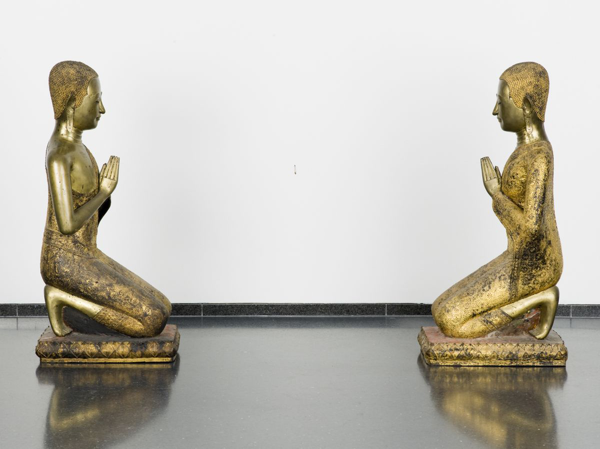Special Topics in the History of Art: The Afro-Asian Body

Amidst calls for a global art history that increasingly must account for exchanges taking place outside mainstream narratives, a rich and surprisingly understudied area has been the relationship between artists of Asian and African descent from the second half of the 20th century to the present. Taking as a metaphorical cue the idea of a utopian discursive "body" jointly imagined through shared commitments to form, the course explores various relationships that formed amidst various critical historical junctures: civil rights struggles in sixties America, the rise of a developing South Korea amidst U.S. military occupation in the late sixties and early seventies, debates over multiculturalism in the early 1990s and critiques of globalization in the 2010s. Emphasizing how artworks relate to one another in ways that are not necessarily about intention or even human agency. This course contends that the values encompassed by the Afro-Asian body revolve around how the recognition of self and others happens through sensorial perception, attention redirection and deferral and resonance. The point, therefore, is not to enshrine "Afro Asian" as a category a la blackness or Asianness but to ask what histories become available or re-available by tracking relationships between subjects and agents marked as Asian or black. New bodies of thinking and imagination are formed via a critical analysis of the racial and political implications of artistic engagements between Asian American and African American artists, between Asian photographers and black subjects, between African American artists and Asian conventions, and last but not least, multiracial artists. When parts of a corpus are rearranged, what forms of attention appear/immediate? In what directions do they flow? And also importantly, how is this flow separate from the channels according to which concepts like nation or race develop?
Textbooks/Other Materials: As uploaded to Canvas Files
Course Requirements:
Intended Audience: Graduate students in any department
Class Format: Seminar
Estimated Cost of Materials: $0
HISTART Distribution Requirements: C. Asia, D. Europe and the US, 4. Modern and Contemporary